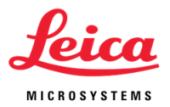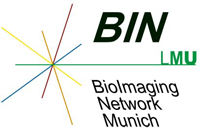LSM 980: Confocal with Airy scanner (N.C.02.064)
Summary
The "Zeiss LSM 980 with Airy-scan 2 and patch clamp set-up" is a confocal microscope based on an upright "fixed stage" Axio Examiner stand. The equipment was selected with various experimental approaches in mind, including fixed cells, observation of endo-lysosomal trafficking, vital sinus node and heart section preparations combined with patch clamping as well as high resolution imaging.
It allows multi-color imaging with excitation at 405, 445, 488, 514, 561 and 639 nm. A multi-channel Meta-detector allows parallel detection of up to 32 spectral regions. Alternatively, detection of a single spectral region at a time can be performed with the Airy-scan 2 unit. This allows higher light effeciency or higher resolution due to computational combination of signals from 32 detector elements. The Airy scan unit also can be used for faster imaging e.g. of live cells by recording several lines in parallel, instead of the line-by-line approach of typical confocal point scanners.
This microscope was funded by the DFG (INST 192/543-1 FUGG; project number: 450471400; PI: Prof. Dr. Christian Wahl-Schott) and is available to users of the Core Facility Bioimaging.

Optics
The following objectives are mounted on the system:
- PApo 20x/0.8 air objective
- W Plan-Apochromat 20x/1.0 DIC (UV)VIS-IR water immersion objective
- LD LCI 40x/1.2 ImmKorrDIC water immersion objective
- Plan-Apochromat 63/1.4 Oil DIC oil immersion objective
Conventional fluorescence
Meant for visual inspection through the eye pieces. Excitation with a Colibri 7 LED at 385, 430, 475, 511, 555 or 630 nm. Respective widefield fluorescent images can be recorded with an Axiocam 712 camera.
Confocal Excitation Lasers
The following laser lines are available for excitation:
- 405 nm, for excitation of dyes such as DAPI.
- 445 nm, for excitation of dyes such as CFP
- 488 nm, for excitation of dyes such as GFP, Alexa488, FITC.
- 514 nm, for excitation of dyes such as YFP
- 561 nm, for excitation of dyes such as Cy3, TRITC, Alexa 555, Alexa 594, tdTomato and mCherry.
- 639 nm, for excitation of dyes such as Cy5, AberriorStar635P, SiR.
Detectors
The microscope has two alternative detection systems:
Spectral Detection
The emitted fluorescence is send through a diffraction grid and thus spread out spectrally. The resulting "rainbow" is then spread over the Meta-Detector. Its 32 detector elements cover the range from 410 to 694 nm, each element about 8-9 nm. They can be combined to generate for example a "green" channel from 499 to 543 nm or combined channels in other spectral regions. It is possible to record spectral channels simultaneously (provided that bleed-through from fluorochromes in neighboring channels are not a problem).
At the blue end and at the red end of the spectrum, the light can be deviated toward a multi-alkali photomultiplier tube (PMT) to direct light of a selectable portion of the spectrum to a single detector. The blue-end PMT can record a selectable range between 377 and 733 nm, for the red-end PMT the range is 387 to 755 nm.
Airyscan 2 detector
As an alternative to the spectral detector above, light can be collected with the Airyscan 2 detector. This light path is filter based, meaning the available detection ranges are defined by the filters in the respective filter wheel and not freely selectable as in spectral detection. Since there is only one detector, only one channel can be collected at a time, multiple color channels are thus recorded sequentially. Switching filters requires movement of the filter wheel. Various filters including dual bandpass options are available to select the typical channels for common fluorochromes.
The Airyscan detector is placed in the detection beam path at the position where other confocals have their pinhole. It can be operated in different modes.
In "superresolution (SR) mode" the position of each detector element is considered and its signal then computationally repositioned. This approach combines the advantages of a very small pinhole (higher resolution) and a large pinhole (more light collection). According to Zeiss, a resolution of 90 nm in the focal plane can be reached with this approach (instead of the typical confocal resolution around 200 nm).
In the various "multiplex modes" a central row of detector elements is used to record several image pixels in parallel. Thus, instead of recording one line after the other, 4 or 8 lines (4Y, 8Y-mode) can be recorded in parallel and thus speed up image recording respectively. Essentiall, the Airy scan is then operated as a small confocal line detector, instead of a point detector. This faster image acquisition mode is usefull for living specimens.







